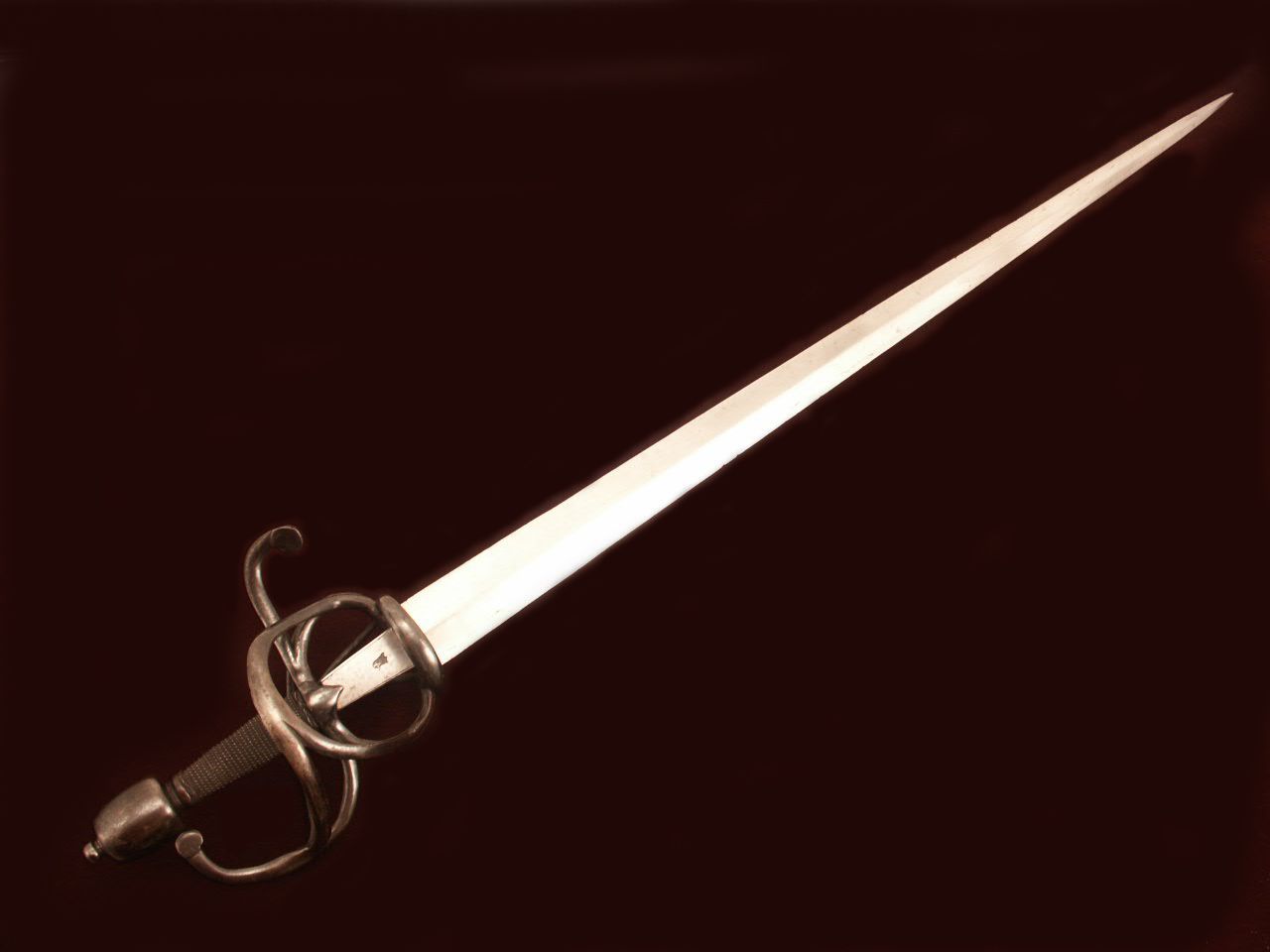Jack Loomes
Swordsperson
C.E.O. Sword-Site
Posts: 1,770 
|
Post by Jack Loomes on Dec 1, 2013 12:51:12 GMT
 Accession Number 2005.02 Munich (southern Germany), about 1600 Wolfgang Stäntler Steel; iron with blueing; wood O.L 40 1/8"; blade L. 33 1/2" 3 lb. 3 oz. During the late Middle Ages, swordsmen learned the trick of slipping their index finger over the crossbar to give them better control over the blade. Since this left the finger exposed to injury, swordmakers began to add protective rings of iron around the base of the blade. Over the course of the 1500s, additional protective bars were added, ultimately producing the fully developed swept hilt. The swept hilt and sharply tapered point on this sword are typical for a rapier, but the wide blade at the hilt is more characteristic of a traditional military broadsword, making it a crossbreed style between the two. Other examples in the RAM and Wallace Collection (A612), Bavarian National Museum. Swedish Army Museum. Cf. also MMA 14.25.1050; PMA 1977-167-572 (cat#352). A similar sword was sold by Fischer Luzern Sept 2006, lot 106. Bibliography
Cf. the similar examples sold in Herman Historica auction no. 38, lot 830; Peter Finer 1996; Peter Dale's about 1996; Christies 2004; Del Mar 2009 lot 112.; Cf. Fischer Auction Cat. Sept 2012, lot #81 For others, see Reichsstadtmuseum Rothenburg (2010) 518-19. Lenkiewicz 1991: 66. On Stäntler, see ZfHWK 8 (1919), 202-3, and Wallace Collection (1924), 307 (#771). See also Stoecklein 1918-20 on Munich bladesmiths. Source: higgins.lostpapyr.us/artifacts/2005.02 |
|
.png?width=1920&height=1080&fit=bounds)